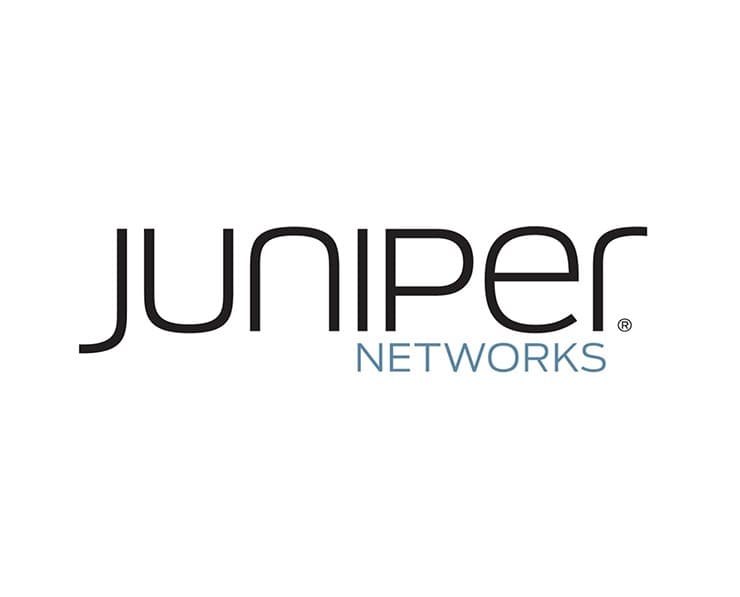Student Feedback
JN0-351: Enterprise Routing and Switching, Specialist (JNCIS-ENT) Certification Video Training Course Outline
Layer 2 Switching and VLANs
Layer 2 Security and Loop Preven...
Protocol Independent Routing
OSPF
IS-IS
BGP
Tunnels
High Availability
Layer 2 Switching and VLANs
JN0-351: Enterprise Routing and Switching, Specialist (JNCIS-ENT) Certification Video Training Course Info
Juniper JNCIS-ENT Certification (JN0-351) – Ultimate Exam Prep Guide
Juniper Networks JNCIS-ENT: Your Guide to Core Networking Expertise
What You Will Learn From This Course
• BGP Concepts and Enterprise-Level Implementation
• In-Depth OSPF Configuration, Operation, and Troubleshooting
• Comprehensive IS-IS Protocol Configuration and Troubleshooting
• Enterprise Layer 2 Security and Loop Mitigation Techniques
• Core Layer 2 Networking Concepts for Enterprise Environments
• JNCIS-ENT Exam Requirements and Coverage
• Prerequisite JNCIA-Junos Knowledge
• Hands-On Lab Exercises for Real-World Application
• Advanced Routing and Switching Strategies in Enterprise Networks
Learning Objectives
By the end of this course, learners will be able to:
• Understand and implement BGP in enterprise environments, including advanced path selection, route filtering, and route redistribution.
• Configure and troubleshoot OSPF in multi-area networks, with a focus on route summarization, SPF calculation, and network optimization.
• Implement IS-IS in enterprise networks, including adjacency formation, metric tuning, and traffic engineering.
• Apply Layer 2 security mechanisms to prevent unauthorized access and mitigate common network attacks.
• Design and manage Layer 2 topologies for enterprise networks with efficient loop prevention and redundancy.
• Gain practical experience using Juniper routers and switches in lab environments to reinforce theoretical knowledge.
• Prepare effectively for the JNCIS-ENT exam by mastering all required exam topics.
• Understand enterprise routing and switching protocols from a Juniper perspective, enhancing career readiness.
• Develop troubleshooting skills for identifying and resolving complex network issues.
Target Audience
This course is designed for professionals who want to advance their skills in enterprise networking using Juniper Networks technologies. Typical participants include:
• Network Engineers looking to deepen their understanding of routing and switching in enterprise environments.
• Network Administrators responsible for managing and configuring Juniper network devices.
• IT Professionals seeking to gain advanced networking knowledge and industry-recognized certification.
• Individuals aiming to pass the JNCIS-ENT certification exam and validate their Juniper expertise.
• Enterprise IT staff who want hands-on experience with Juniper routing and switching protocols.
• Professionals seeking to enhance their career prospects and increase earning potential in networking roles.
Requirements
To make the most of this course, learners should have access to:
• A computer with sufficient processing power to run virtual lab environments.
• Network simulation tools such as Juniper vLabs or equivalent emulators for hands-on practice.
• Internet connectivity for accessing course materials, lab configurations, and updates.
• Basic understanding of networking concepts, IP addressing, and protocol fundamentals.
• Time commitment to engage with lectures, exercises, and lab work for optimal learning outcomes.
Prerequisites
This course assumes learners have:
• JNCIA-Junos certification or equivalent knowledge of Juniper devices and the Junos operating system.
• Foundational knowledge of networking principles including TCP/IP, VLANs, and routing basics.
• Basic experience with configuring and managing networking devices in an enterprise environment.
• Familiarity with Layer 2 and Layer 3 concepts, including Ethernet, switching, and IP routing.
• Previous exposure to enterprise routing protocols such as OSPF, IS-IS, or BGP is recommended but not required.
Description
Enterprise networks are the backbone of modern organizations, supporting critical applications, services, and communication. Understanding enterprise routing and switching is essential for IT professionals who aim to manage these networks effectively. This course focuses on providing a structured path to mastering Juniper Networks technologies, covering the key routing protocols, Layer 2 fundamentals, and advanced enterprise configurations.
Routing is the process of directing network traffic between different networks. In enterprise environments, routing must be efficient, scalable, and resilient. Protocols such as OSPF, IS-IS, and BGP play crucial roles in ensuring traffic follows optimal paths and reaches its destination reliably. This course emphasizes not just theoretical knowledge but also practical configuration and troubleshooting techniques, allowing learners to apply what they learn in real-world scenarios.
Layer 2 networking, which involves switching, VLANs, and loop prevention mechanisms, forms the foundation for enterprise connectivity. Layer 2 designs must prevent broadcast storms, loops, and unauthorized access, while ensuring high availability. Learners will explore security measures such as BPDU Guard, loop prevention strategies, and advanced VLAN configurations to secure and optimize enterprise networks.
Juniper Networks devices are widely deployed in enterprise and service provider networks. The JNCIS-ENT certification focuses on intermediate-level skills, bridging the gap between basic networking knowledge and advanced enterprise-level expertise. By mastering Juniper routers and switches, learners not only prepare for certification but also gain valuable skills that are in high demand in the IT industry.
BGP Fundamentals for the Enterprise
BGP, or Border Gateway Protocol, is a crucial routing protocol in large-scale networks. Enterprise networks often use BGP to connect with multiple ISPs, implement route redundancy, and control traffic flows. This course covers BGP fundamentals, including neighbor relationships, route advertisements, path selection, and policy-based routing. Learners will gain hands-on experience configuring BGP on Juniper routers, understanding how routing decisions are made, and troubleshooting common issues that arise in enterprise deployments.
Understanding BGP policies, route filters, and route redistribution is essential for maintaining network stability and efficiency. Through lab exercises, learners will practice configuring BGP sessions, applying route policies, and monitoring BGP behavior to ensure optimal network performance. This knowledge equips learners with the ability to design and manage resilient enterprise networks that meet organizational requirements.
OSPF Functions, Configurations, and Troubleshooting
OSPF, or Open Shortest Path First, is a widely used interior gateway protocol in enterprise networks. It provides fast convergence, hierarchical routing through areas, and scalability for large networks. This course provides an in-depth look at OSPF functions, including area design, LSA types, SPF calculation, and route summarization.
Learners will configure OSPF in multi-area networks, troubleshoot common problems, and optimize OSPF performance. Practical labs reinforce these concepts, giving learners confidence in deploying OSPF in real-world enterprise scenarios. Understanding OSPF is critical for network engineers seeking to ensure high availability, minimize downtime, and maintain efficient routing in complex networks.
IS-IS Functions, Configurations, and Troubleshooting
IS-IS is another important interior gateway protocol, particularly in large enterprise networks. It offers scalability, flexibility, and support for IPv4 and IPv6 routing. This course covers IS-IS fundamentals, adjacency formation, metric tuning, and traffic engineering considerations. Learners will configure IS-IS, monitor routing tables, and troubleshoot network issues to ensure reliable operation.
Hands-on labs provide practical experience with IS-IS configurations, enabling learners to implement advanced routing strategies, optimize network performance, and prepare for the JNCIS-ENT exam. Mastery of IS-IS complements OSPF knowledge, giving learners a comprehensive understanding of enterprise routing protocols.
Layer 2 Fundamentals and Security
Layer 2 networking forms the foundation of enterprise connectivity, and securing this layer is critical to prevent network disruptions. This course covers Layer 2 fundamentals, VLAN design, spanning-tree protocols, and loop prevention techniques. Security measures, including BPDU Guard, port security, and storm control, are also addressed to protect the network from attacks and misconfigurations.
Learners will gain practical experience implementing these features on Juniper switches, ensuring they can maintain reliable, secure, and optimized Layer 2 networks. Understanding both fundamentals and advanced Layer 2 concepts is essential for network engineers seeking enterprise-level expertise.
Hands-On Labs and Real-World Applications
Practical experience is a key component of this course. Learners will engage in lab exercises that simulate enterprise networking scenarios, covering routing, switching, security, and protocol configurations. These labs reinforce theoretical knowledge, develop troubleshooting skills, and provide the confidence to apply what is learned in live environments.
Through guided exercises, learners will configure BGP, OSPF, IS-IS, and Layer 2 networks, troubleshoot issues, and optimize network performance. This hands-on approach ensures learners are not only exam-ready but also equipped for real-world networking challenges.
Course Modules / Sections
The Juniper Networks JNCIS-ENT Certification course is divided into structured modules designed to provide a comprehensive learning path. Each module focuses on specific areas of enterprise networking, providing both theoretical knowledge and practical application to ensure mastery of concepts required for the JNCIS-ENT certification.
The first module introduces enterprise routing fundamentals, emphasizing the importance of proper network design and routing protocol selection. Learners explore OSPF and IS-IS protocols, their differences, and how they function in real-world enterprise networks. This module also covers configuration and troubleshooting techniques, allowing learners to implement and maintain efficient routing infrastructures.
The second module focuses on BGP for enterprise environments. BGP is a critical protocol for interconnecting multiple sites, handling route redistribution, and implementing policy-based routing. Learners gain in-depth knowledge of BGP session establishment, route propagation, path selection, and route filtering. The module also covers troubleshooting scenarios, enabling learners to identify and resolve common BGP issues in complex networks.
The third module covers Layer 2 networking fundamentals and security. This module teaches the design and configuration of VLANs, spanning tree protocol, loop prevention, and security measures such as BPDU Guard and storm control. Learners gain practical experience implementing Layer 2 topologies that are secure, resilient, and optimized for enterprise networks.
The fourth module introduces advanced routing topics, including route redistribution, policy-based routing, and network convergence optimization. This module focuses on the practical implementation of these techniques using Juniper devices, ensuring learners can handle complex enterprise network environments.
The fifth module emphasizes hands-on lab exercises that reinforce the concepts covered in previous modules. Learners engage in practical scenarios to configure, troubleshoot, and optimize routing and switching networks, preparing them for real-world deployment as well as exam readiness.
The sixth module focuses on exam preparation strategies, covering JNCIS-ENT exam topics in detail, providing practice scenarios, and offering guidance on how to approach exam questions effectively. Learners also review common pitfalls and learn techniques to maximize their chances of success on the certification exam.
The final module consolidates knowledge across all previous modules. Learners undertake comprehensive lab exercises, simulating full enterprise network configurations. This module ensures learners have a complete understanding of routing, switching, and security practices, and can implement enterprise networks with confidence.
Key Topics Covered
This course is designed to cover all essential topics necessary to achieve JNCIS-ENT certification while also providing practical knowledge for enterprise network management. Key topics include:
Routing Protocols: In-depth coverage of OSPF and IS-IS configuration, operation, optimization, and troubleshooting. Learners understand area design, LSA types, SPF calculations, adjacency formation, metric tuning, and traffic engineering considerations for large-scale enterprise networks.
BGP Implementation: Learners explore BGP fundamentals, including establishing neighbor relationships, route advertisement, path selection, route filtering, route redistribution, and policy-based routing. Emphasis is placed on configuring BGP in enterprise networks, troubleshooting connectivity issues, and ensuring network redundancy and resilience.
Layer 2 Networking: Key topics include VLAN configuration, trunking, spanning tree protocols, loop prevention, and Layer 2 security measures. Learners gain knowledge in implementing secure Layer 2 topologies, mitigating risks such as broadcast storms, and ensuring network stability.
Security Measures: Focus on enterprise-level network security at both Layer 2 and Layer 3. Topics include access control lists, BPDU Guard, port security, storm control, and strategies to protect enterprise networks from attacks and misconfigurations.
Advanced Routing Techniques: Learners explore route redistribution between protocols, policy-based routing, route preference and metric manipulation, network convergence optimization, and traffic engineering. These topics prepare learners to manage complex enterprise networks efficiently.
Practical Labs: Hands-on exercises provide experience configuring Juniper routers and switches, implementing routing protocols, optimizing Layer 2 networks, applying security measures, and troubleshooting real-world scenarios. Labs reinforce learning and build confidence for enterprise deployment.
Network Design Principles: Learners explore design considerations for scalable, redundant, and efficient enterprise networks. This includes hierarchical network design, core-distribution-access architecture, and best practices for integrating multiple routing protocols.
Exam Preparation: Topics include comprehensive review of all JNCIS-ENT exam objectives, practice scenarios, configuration examples, and troubleshooting exercises. Learners also receive guidance on exam strategies and techniques to maximize success.
Teaching Methodology
The teaching methodology for this course is a combination of instructor-led demonstrations, hands-on labs, practical exercises, and scenario-based learning. Each concept is introduced through detailed explanations, supported by real-world examples and demonstrations on Juniper devices or virtual lab environments.
Instructor-Led Demonstrations: Ben Jacobson guides learners through detailed demonstrations, explaining configuration commands, protocol behavior, and troubleshooting procedures step-by-step. Demonstrations are designed to provide clear insight into enterprise network operations.
Hands-On Labs: Learners gain practical experience by completing lab exercises that simulate enterprise network environments. Labs cover routing, switching, security, and protocol configurations. Learners are encouraged to explore multiple approaches to problem-solving to develop strong technical intuition.
Scenario-Based Learning: The course includes scenario-based exercises to apply theoretical knowledge in realistic contexts. Learners work on network topologies reflecting enterprise environments, implementing routing protocols, configuring BGP policies, and securing Layer 2 networks.
Interactive Exercises: Exercises are designed to engage learners actively, providing immediate feedback and reinforcing learning. These exercises ensure that learners understand not only the "how" but also the "why" behind network configurations and design decisions.
Concept Reinforcement: Throughout the course, key concepts are reinforced with examples, demonstrations, and lab activities. Learners are encouraged to review and practice configurations multiple times to solidify understanding.
Exam-Focused Training: The teaching methodology also incorporates exam-focused guidance, including topic reviews, practice questions, troubleshooting exercises, and lab simulations aligned with the JNCIS-ENT exam blueprint.
Assessment & Evaluation
Assessment in this course is designed to measure both theoretical knowledge and practical skills. Learners are evaluated continuously through lab exercises, scenario-based tasks, and practice exams.
Lab-Based Assessment: Learners complete hands-on labs that require configuration, troubleshooting, and optimization of routing and switching networks. Labs are graded based on accuracy, efficiency, and adherence to best practices.
Scenario Evaluations: Scenario-based tasks simulate enterprise network challenges, testing learners’ ability to implement solutions in realistic environments. Evaluation focuses on problem-solving skills, protocol implementation, and security measures.
Knowledge Checks: Periodic knowledge assessments ensure learners have retained key concepts. These assessments cover routing protocols, BGP policies, Layer 2 configuration, and network security principles.
Practical Exam Simulations: Learners participate in simulated exams that mirror the structure and content of the JNCIS-ENT certification exam. This includes configuration tasks, troubleshooting scenarios, and protocol analysis. Feedback is provided to highlight strengths and areas needing improvement.
Continuous Feedback: Throughout the course, learners receive feedback from instructors and automated lab systems. This feedback helps learners identify mistakes, understand best practices, and improve their skills progressively.
Performance Metrics: Assessment metrics include completion of lab exercises, accuracy of configurations, problem-solving efficiency, and understanding of protocol concepts. Learners are guided to achieve proficiency across all critical areas for JNCIS-ENT certification.
Exam Readiness Evaluation: At the conclusion of the course, learners undergo a comprehensive evaluation to measure readiness for the JNCIS-ENT exam. This evaluation tests practical skills, protocol knowledge, and the ability to handle complex enterprise network scenarios effectively.
By combining theoretical instruction, hands-on practice, scenario-based exercises, and continuous evaluation, this course ensures that learners not only understand the concepts but can also apply them in enterprise network environments confidently. The focus on practical implementation and assessment ensures that learners are fully prepared to pass the JNCIS-ENT certification exam and excel in professional networking roles.
The course’s structured modules, clear key topics, interactive teaching methodology, and comprehensive assessment strategy provide a robust framework for mastering Juniper enterprise networking. Learners will develop advanced skills in routing, switching, and security, and gain hands-on experience required for real-world applications.
This comprehensive approach equips learners with the knowledge and practical expertise to manage, optimize, and secure enterprise networks using Juniper devices, preparing them for both professional success and certification achievement.
Benefits of the Course
The Juniper Networks JNCIS-ENT Certification course provides numerous benefits for IT professionals seeking to advance their careers in networking and enterprise infrastructure. By completing this course, learners gain a deep understanding of enterprise routing, switching, and network security, all within the Juniper ecosystem. This knowledge equips professionals to manage complex network environments efficiently, making them valuable assets to any organization.
One of the primary benefits of the course is the structured learning path it provides. Each module builds on the previous one, ensuring learners develop a solid foundation before moving on to advanced concepts. From Layer 2 fundamentals to advanced BGP and IS-IS configurations, learners receive a comprehensive understanding of enterprise networking practices.
The course also emphasizes hands-on experience. Practical lab exercises simulate real-world network scenarios, allowing learners to apply theoretical knowledge in controlled environments. This experience is invaluable for preparing for real-world network management and troubleshooting, enabling learners to confidently implement routing and switching protocols in enterprise environments.
Another benefit is exam readiness. The course is designed to cover all topics required for the JNCIS-ENT certification, including BGP, OSPF, IS-IS, Layer 2 security, and enterprise routing strategies. Learners gain familiarity with exam objectives, troubleshooting tasks, and configuration exercises, enhancing their ability to pass the certification exam on the first attempt.
Career advancement is a key benefit of earning the JNCIS-ENT certification. This credential is highly regarded in the IT industry, signaling advanced knowledge in Juniper networks and enterprise infrastructure. Professionals with this certification are often considered for higher-level roles, including network engineer, network administrator, and IT infrastructure specialist positions.
The course also helps learners develop troubleshooting skills essential for enterprise network environments. By understanding common network issues, protocol behaviors, and configuration errors, learners can efficiently resolve problems, ensuring high availability and optimal performance. This practical expertise translates directly into workplace competency.
Additionally, learners gain access to expert instruction from Ben Jacobson, a professional with over a decade of experience in enterprise networking. His guidance and insights provide valuable perspectives on real-world network deployment, configuration, and optimization, enhancing the learning experience and professional development.
Finally, the course supports continuous learning. With access to lab exercises, practical examples, and in-depth explanations, learners can revisit materials as needed. This approach ensures retention of knowledge, allowing professionals to remain current with evolving enterprise networking practices and Juniper technologies.
Course Duration
The Juniper Networks JNCIS-ENT Certification course is structured to provide comprehensive training while accommodating learners’ schedules. The total duration of the course is approximately 40 to 50 hours of instructional content, which can be completed at a learner’s own pace.
The course is divided into multiple modules, each focusing on specific topics in enterprise routing, switching, and security. Each module includes lectures, lab exercises, and practical demonstrations. On average, learners can expect to spend three to five hours per module, depending on prior knowledge and learning speed.
Hands-on labs are an integral part of the course, and learners should allocate additional time to complete lab exercises thoroughly. Lab activities vary in complexity, ranging from basic configuration tasks to advanced routing and troubleshooting scenarios. Completing these exercises ensures learners gain practical skills essential for real-world network management.
For learners aiming to achieve JNCIS-ENT certification efficiently, it is recommended to follow a consistent study schedule. Dedicating two to three hours per day for study and lab work allows learners to complete the course within three to four weeks. Those with limited availability can extend the schedule over six to eight weeks, ensuring a thorough understanding of all topics.
The flexible course duration accommodates both full-time IT professionals and learners balancing other commitments. By progressing at their own pace, learners can focus on challenging topics, repeat lab exercises as needed, and ensure mastery before moving to advanced concepts.
Tools & Resources Required
To successfully complete the Juniper Networks JNCIS-ENT Certification course, learners will need access to certain tools and resources that facilitate both theoretical learning and practical application.
Virtual Lab Environments: Access to Juniper virtual labs or equivalent network simulation software is essential. These labs allow learners to configure routers and switches, implement routing protocols, and test network scenarios in a controlled environment. Virtual labs simulate real-world enterprise networks, providing hands-on experience that reinforces theoretical knowledge.
Juniper Documentation: Official Juniper Networks documentation is an important resource for understanding device configuration, command syntax, and protocol behavior. Learners are encouraged to reference configuration guides, protocol descriptions, and technical notes to supplement course materials.
Network Simulator Software: Tools such as EVE-NG, GNS3, or Juniper vLabs provide virtual environments for lab exercises. These simulators allow learners to practice routing, switching, and security configurations without the need for physical hardware, making training accessible and cost-effective.
Course Materials: Access to video lectures, presentation slides, and lab guides is provided as part of the course. These materials serve as references for concepts, step-by-step instructions, and configuration examples. Learners can revisit these resources to reinforce understanding and prepare for exams.
Basic Networking Tools: Learners should have access to standard networking utilities such as ping, traceroute, SSH clients, and terminal emulators. These tools are necessary for testing network connectivity, verifying configurations, and troubleshooting network issues.
Reliable Internet Connection: A stable internet connection is required to access online lectures, virtual labs, and supplemental resources. Learners must also be able to download lab files, updates, and software tools necessary for practical exercises.
Text Editor and Command-Line Interface Tools: Familiarity with text editors for configuration files and CLI-based interfaces for Juniper devices is essential. Learners will frequently interact with the Junos operating system using the command line to configure routing, switching, and security features.
Support Resources: Many learners benefit from access to online forums, discussion groups, and community resources where networking professionals share knowledge and troubleshooting tips. Engaging with these resources can provide additional support and insights during the course.
Hardware Access (Optional): While virtual labs are sufficient for most learners, those with access to physical Juniper routers and switches may benefit from hands-on practice with actual devices. Physical hardware can enhance understanding of device behavior, cabling, and real-world network management.
By utilizing these tools and resources, learners gain a well-rounded training experience. The combination of theoretical instruction, hands-on practice, and access to reference materials ensures learners are prepared for both JNCIS-ENT certification and practical enterprise networking scenarios.
Completing the course with these tools enhances technical proficiency, reinforces concepts, and builds confidence in configuring, troubleshooting, and managing enterprise networks using Juniper devices.
Career Opportunities
Completing the Juniper Networks JNCIS-ENT Certification course opens doors to a wide range of career opportunities in enterprise networking, IT infrastructure, and telecommunications. This certification validates intermediate-level skills in routing, switching, and network security using Juniper devices, making professionals highly sought after in the industry.
Network Engineer roles are one of the primary career paths for certified professionals. Network engineers are responsible for designing, implementing, and maintaining enterprise networks. With expertise in OSPF, IS-IS, BGP, and Layer 2 networking, JNCIS-ENT certified professionals can configure complex routing and switching topologies, troubleshoot network issues, and optimize performance. Employers value these skills for ensuring efficient and reliable network operations.
Network Administrator positions are also common for those who complete this course. Administrators maintain the day-to-day operation of network devices, monitor network performance, and implement security policies. JNCIS-ENT certification equips administrators with the knowledge to manage Juniper routers and switches, secure network segments, and apply best practices for enterprise network stability.
IT Infrastructure Specialist roles benefit from this certification as well. Professionals in these roles design and maintain network infrastructure, ensure high availability, and support enterprise applications. Understanding advanced routing protocols, Layer 2 configurations, and network security allows specialists to contribute effectively to large-scale IT projects and network optimization initiatives.
Security-focused positions, including Network Security Engineer and Security Analyst, can also benefit from JNCIS-ENT knowledge. Layer 2 and Layer 3 security configurations, loop prevention, and protocol-specific security measures are critical for protecting enterprise networks from internal and external threats. Certified professionals are equipped to implement access controls, monitor traffic for anomalies, and maintain secure enterprise environments.
Service providers and managed service organizations seek certified professionals for network design, deployment, and troubleshooting roles. Expertise in Juniper devices, routing protocols, and enterprise network best practices ensures professionals can manage multi-site networks, optimize traffic flow, and deliver reliable services to clients.
For career advancement, the JNCIS-ENT certification serves as a stepping stone to senior-level networking roles, including Senior Network Engineer, Network Architect, and Network Consultant. Professionals in these positions design enterprise-wide network strategies, oversee large-scale deployments, and provide guidance for optimizing network performance. The certification demonstrates a validated skill set, enhancing credibility and professional recognition.
Additionally, IT professionals with JNCIS-ENT certification have opportunities to work in industries such as finance, healthcare, telecommunications, government, and technology. These sectors rely heavily on robust, secure, and efficient enterprise networks. Knowledge of Juniper routing, switching, and security protocols allows professionals to contribute effectively to organizational goals and infrastructure projects.
Freelance and consulting opportunities also increase with JNCIS-ENT certification. Certified professionals can offer network design, configuration, and troubleshooting services to enterprises seeking expertise in Juniper networking solutions. This flexibility allows professionals to diversify their careers and gain experience across multiple industries.
The demand for certified Juniper professionals continues to grow as organizations expand their networks, adopt cloud services, and prioritize secure and reliable enterprise connectivity. Holding a JNCIS-ENT certification positions individuals for competitive salaries, increased responsibilities, and long-term career growth.
Conclusion
The Juniper Networks JNCIS-ENT Certification course provides a comprehensive learning path for IT professionals seeking advanced skills in enterprise networking. Covering BGP, OSPF, IS-IS, Layer 2 fundamentals, and security practices, the course equips learners with the knowledge required to design, configure, and manage enterprise networks effectively. Hands-on lab exercises, scenario-based learning, and exam-focused content ensure learners are well-prepared for both real-world applications and the JNCIS-ENT certification exam.
By completing this course, professionals gain a strong foundation in Juniper technologies, enhancing their technical expertise and problem-solving capabilities. The structured modules, practical exercises, and continuous assessment provide a robust framework for mastering intermediate-level networking skills. Learners develop proficiency in routing protocols, network security, Layer 2 configurations, and enterprise network troubleshooting.
The benefits of this course extend beyond exam preparation. Professionals gain confidence in implementing enterprise network solutions, managing complex network environments, and addressing real-world networking challenges. The knowledge and skills acquired are directly applicable to workplace scenarios, improving operational efficiency and network reliability.
With the JNCIS-ENT certification, professionals demonstrate validated expertise in Juniper enterprise networking. This credential is recognized globally and signifies proficiency in configuring, managing, and troubleshooting Juniper routing and switching devices. Certified individuals are well-positioned to pursue advanced networking roles, including network engineer, network administrator, IT infrastructure specialist, and security-focused positions.
The course also provides long-term career advantages. Certified professionals benefit from higher earning potential, expanded job opportunities, and increased professional credibility. Employers value the combination of theoretical knowledge, practical experience, and certification, making JNCIS-ENT holders attractive candidates for critical networking positions.
The comprehensive curriculum ensures learners are not only prepared for certification but also equipped with skills to implement best practices in enterprise networking. Emphasis on hands-on labs and scenario-based exercises builds confidence in managing complex networks, applying security measures, and optimizing routing and switching performance.
By completing the Juniper Networks JNCIS-ENT Certification course, professionals can contribute effectively to organizational success. They are capable of designing scalable and secure enterprise networks, implementing routing protocols efficiently, and troubleshooting issues with precision. The course empowers learners to meet industry demands and take on leadership roles in network management and IT infrastructure.
The course also promotes continuous learning and professional growth. Access to lab exercises, instructional materials, and practical examples allows learners to revisit concepts, refine skills, and stay current with evolving networking technologies. This lifelong learning approach ensures long-term competency and relevance in the IT and networking field.
Enroll Today
Take the next step in your networking career by enrolling in the Juniper Networks JNCIS-ENT Certification course. This course offers a complete, structured path to mastering enterprise routing, switching, and security with Juniper devices. Whether you aim to advance your career, earn certification, or enhance your practical networking skills, this course provides the resources, guidance, and hands-on experience necessary to succeed.
With expert instruction from Ben Jacobson, hands-on labs, and exam-focused content, learners gain the confidence and knowledge required to implement enterprise networking solutions and achieve JNCIS-ENT certification. Enroll today to access comprehensive modules, practical exercises, and professional guidance that will elevate your networking expertise and open doors to rewarding career opportunities.
Invest in your professional future by joining this course. Acquire the skills, experience, and certification that will position you for success in enterprise networking, IT infrastructure, and network security roles. Start your journey today and take the first step toward becoming a certified Juniper networking professional.













